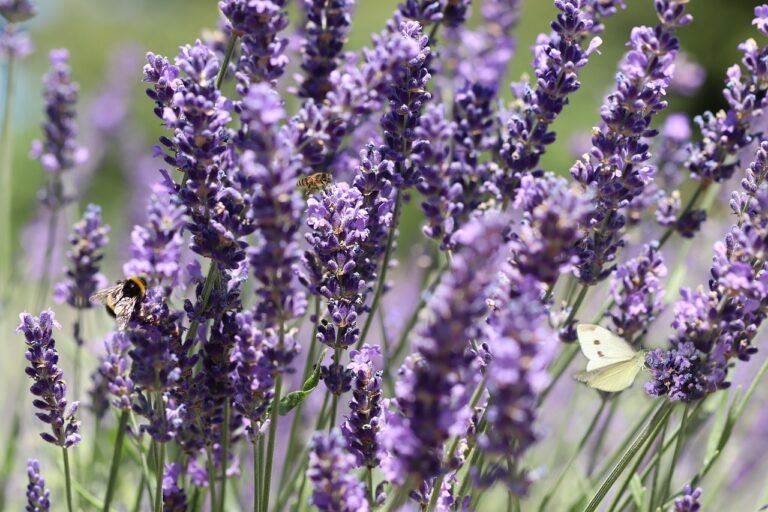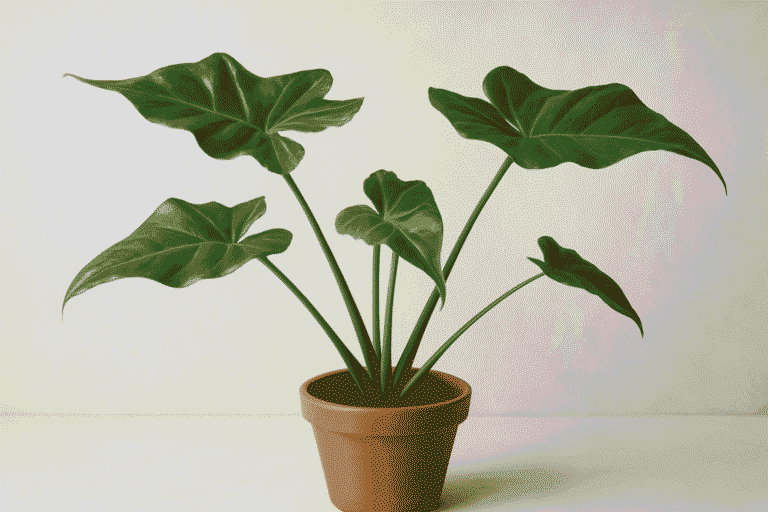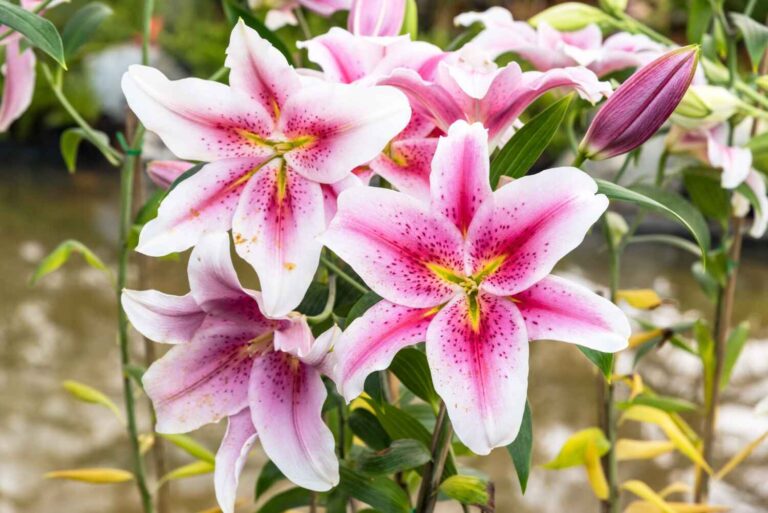Alocasia Stingray Plant Guide: Tips for Healthy Growth
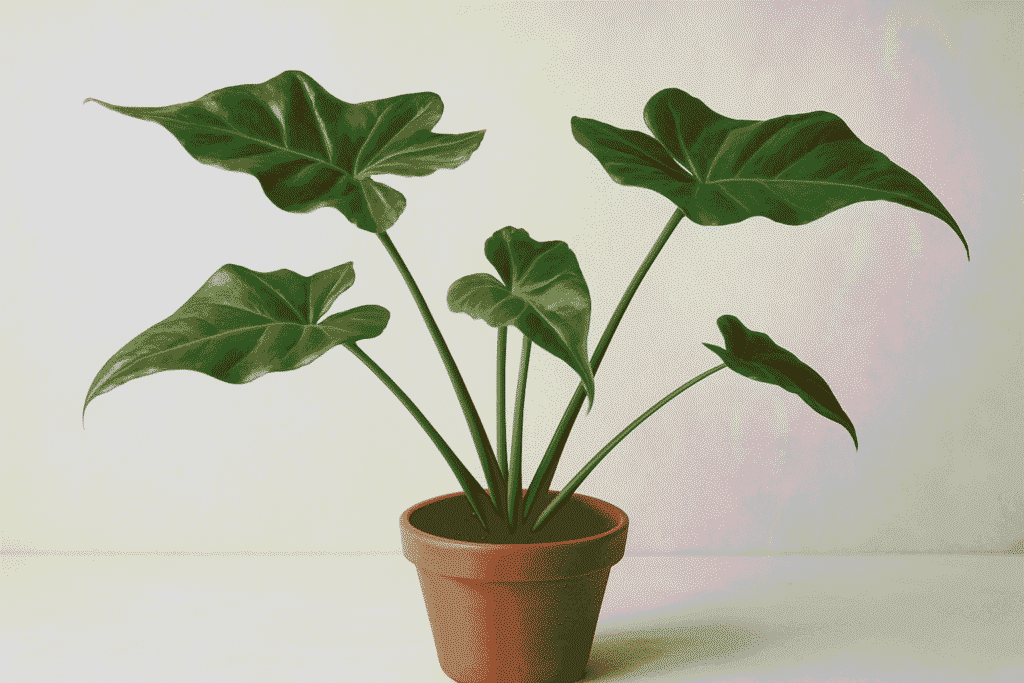
If you’re on the lookout for a houseplant that truly makes a statement, the alocasia stingray might just steal your heart. With its glossy green leaves shaped like a stingray’s body and tail, this plant feels more like living art than just décor. I still remember the first time I brought mine home—it instantly became the centerpiece of my living room. People couldn’t help but stop and ask, “What plant is that?”
But here’s the thing: while the alocasia stingray is stunning, it’s not your typical low-maintenance plant. It thrives when you understand its tropical roots and give it the right balance of sunlight, water, and humidity. Don’t let that intimidate you, though. Once you learn its rhythm, caring for it can feel second nature, and the reward is a lush, vibrant plant that keeps turning heads.
In this guide, I’ll share practical tips to help you grow a healthy alocasia stingray at home. Whether you’re placing it in a bright corner of your apartment, adding it to your indoor jungle, or experimenting with patio gardening during warm months, you’ll find everything you need to keep it thriving. From watering habits to soil choices and even a few tricks I’ve learned the hard way, this guide is all about making your alocasia stingray a plant you’ll love showing off.
What Makes the Alocasia Stingray Plant Unique?
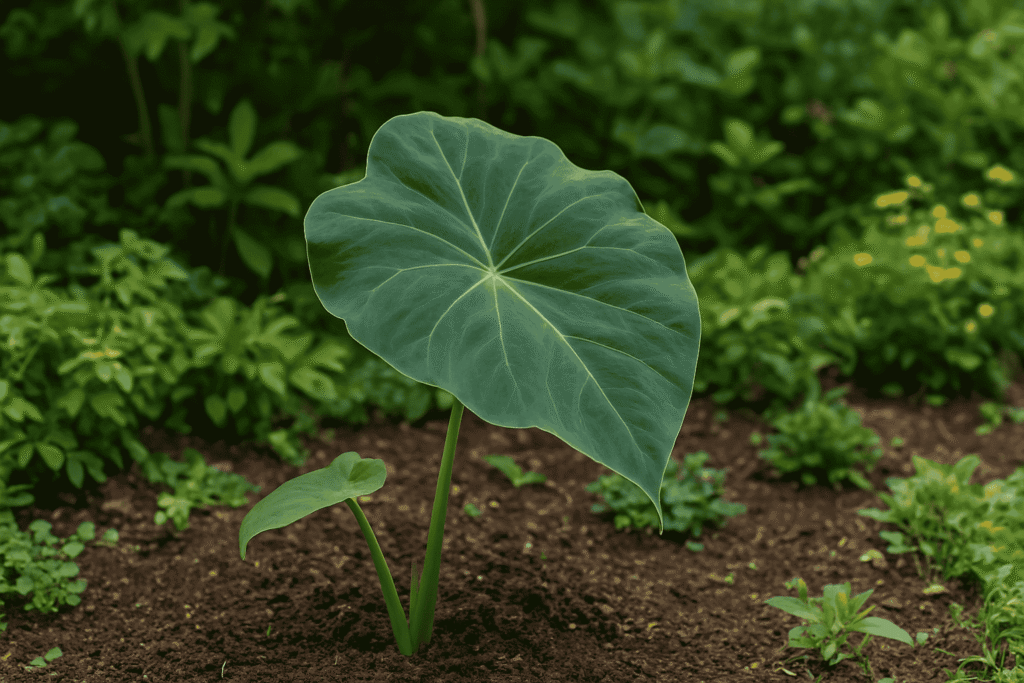
The alocasia stingray plant isn’t just another leafy houseplant—it’s a true conversation starter. Its leaves resemble the shape of a stingray, with broad, glossy “wings” and a long, tail-like tip that gives it a playful, almost whimsical look. The first time I saw one at a local nursery, I honestly thought it looked like something out of an underwater scene, and that’s what made me want to bring it home.
What sets this plant apart is its ability to bring a bold, tropical vibe to any space without needing flowers to stand out. The deep green foliage alone makes it a statement piece in a living room, office, or even a shaded patio during summer. Unlike many common houseplants, the alocasia stingray plant feels almost exotic—it’s the kind of plant guests notice right away.
It’s also fascinating to watch the leaves unfurl over time. Each new leaf has its own “stingray” shape, and seeing that growth feels rewarding. While it may need a little extra attention compared to low-maintenance plants, its unique design and lush, sculptural presence make the effort totally worth it.
Stingray Alocasia Care: Light, Water, and Soil Needs
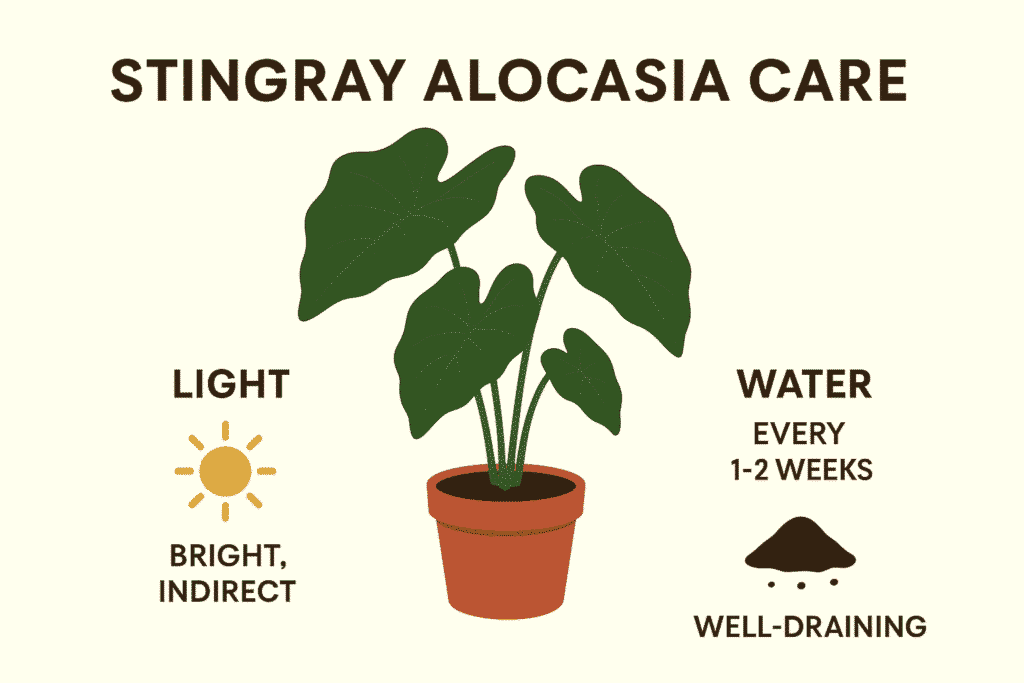
Caring for a stingray alocasia may sound intimidating at first, but once you understand its preferences, it becomes second nature. Since this plant has tropical roots, it craves bright, indirect light. I learned early on that direct sunlight can scorch its leaves, so I keep mine near a large window with sheer curtains. That way, it gets all the brightness it needs without the harsh rays.
When it comes to watering, consistency is key. The stingray alocasia likes its soil to stay slightly moist but never soggy. In my own routine, I always check the top inch of soil—if it feels dry, it’s time to water. Overwatering can lead to root rot, which I unfortunately learned the hard way with my first plant.
The soil mix is just as important. A well-draining potting mix, ideally with peat, perlite, and a bit of compost, works wonders. It helps the roots breathe while still holding enough moisture for healthy growth. Since stingray alocasia can be a bit dramatic when it’s unhappy, giving it the right balance of light, water, and soil keeps it thriving and looking its absolute best.
How to Maintain the Right Humidity for Alocasia Stingray Plant?
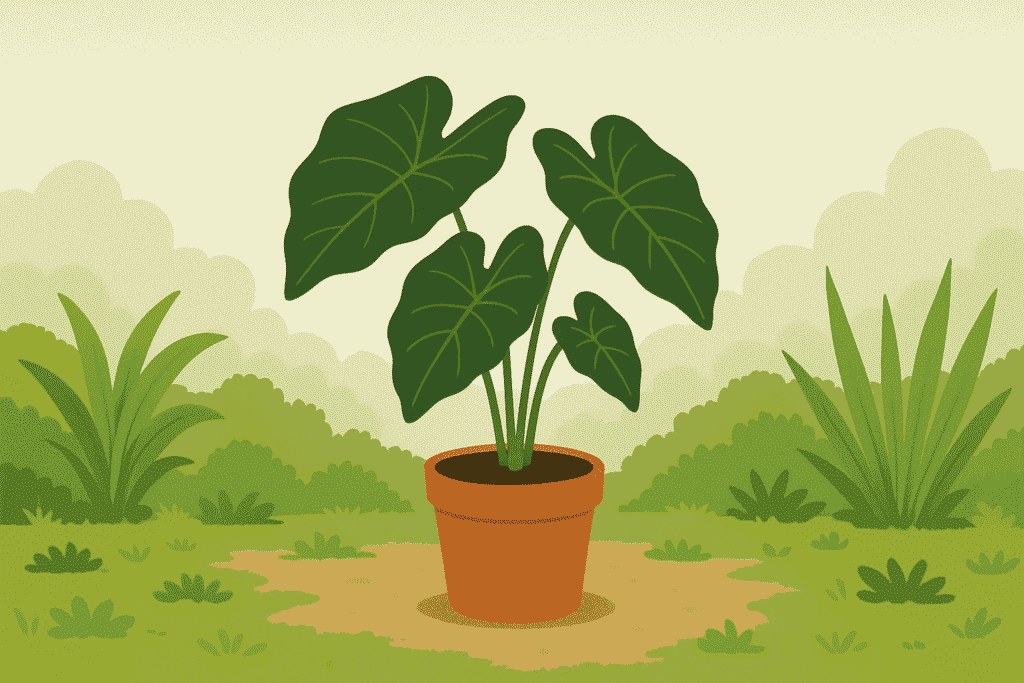
One thing I quickly realized about the alocasia stingray plant is that it loves humidity—much more than the average home usually provides. Since it comes from a tropical environment, dry air can cause its leaves to curl or develop crispy edges. I live in a part of the U.S. where winters can be especially dry, and that’s when my alocasia really started showing signs of stress.
The easiest fix was placing a small humidifier nearby. Within a week, I noticed the leaves looking fresher and healthier. Another trick I use is grouping it with other houseplants to naturally boost humidity around them—it’s like creating a little jungle corner indoors. If you don’t want a humidifier, a pebble tray filled with water under the pot can also help keep moisture levels up.
Ideally, the alocasia stingray plant thrives in 60–80% humidity. While that might sound high, small adjustments can make a huge difference. Keeping an eye on its leaves is the best indicator—when they’re glossy and upright, you’ll know your plant is happy in its environment.
Propagation and Repotting Tips for Stingray Alocasia
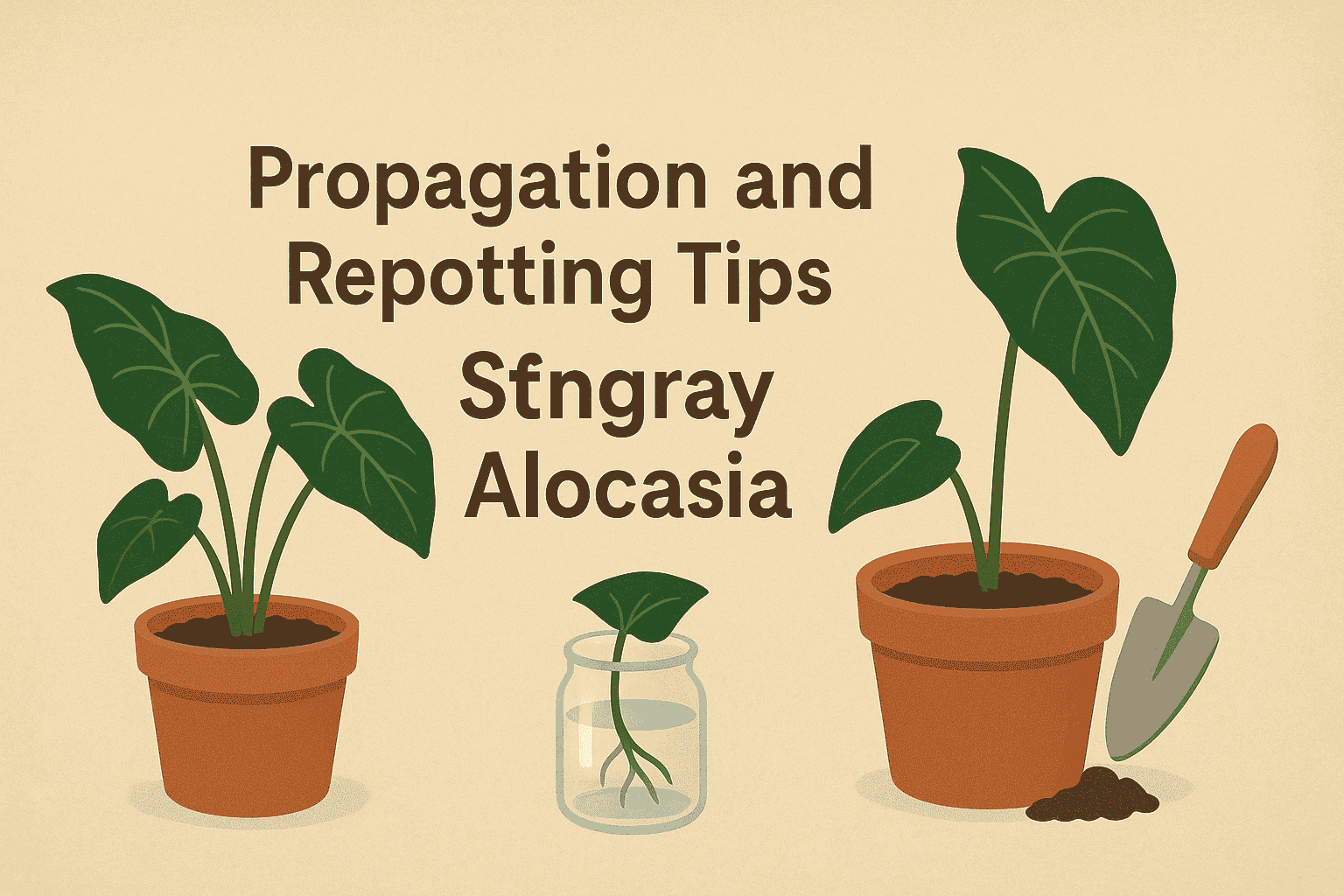
If you’ve ever wanted to multiply your stingray alocasia, the good news is that propagation is easier than it sounds. Unlike plants you can grow from cuttings, this one is best propagated by dividing its rhizomes (the underground stems). I still remember the first time I tried it—I was nervous about separating the roots, but once I gently teased apart the sections with a clean knife, each new division grew into a healthy plant of its own.
Repotting is another important part of stingray alocasia care. These plants like a bit of room to stretch, but not too much all at once. I usually repot mine every 1–2 years, typically in spring when it’s actively growing. Choosing a pot that’s just one size bigger helps prevent overwatering issues while giving the roots enough space. Don’t forget to use a well-draining soil mix, since soggy roots are a quick way to make this plant unhappy.
Propagation and repotting not only keep your stingray alocasia thriving but also give you the chance to share this unique plant with friends and family—a little green gift that always sparks excitement.
Is Alocasia Stingray Really an Elephant Ear Plant?

If you’ve ever heard someone call the alocasia stingray an elephant ear plant, they’re not entirely wrong. Alocasias belong to the same family (Araceae) as other elephant ear varieties, which are known for their large, dramatic leaves. But the stingray alocasia stands out from the crowd—it has that signature “tail” at the end of each leaf that makes it look more like a stingray gliding through water than a traditional elephant ear.
When I first brought mine home, a friend pointed to it and said, “That’s a cool elephant ear plant!” Technically, yes—it shares the same tropical origins and bold presence—but I had to explain that this variety is a little more unique. Unlike the wide, heart-shaped leaves you usually see on elephant ears, the stingray has a quirky, sculptural quality that makes it feel almost whimsical.
So, while it does fall under the elephant ear umbrella, the alocasia stingray is like the playful cousin in the family. It carries that same dramatic, tropical vibe we love in elephant ear plants, but with an artistic twist that makes it a true showstopper in any collection.
Why the Elephant Ear Plant Family is Loved by Indoor Gardeners?
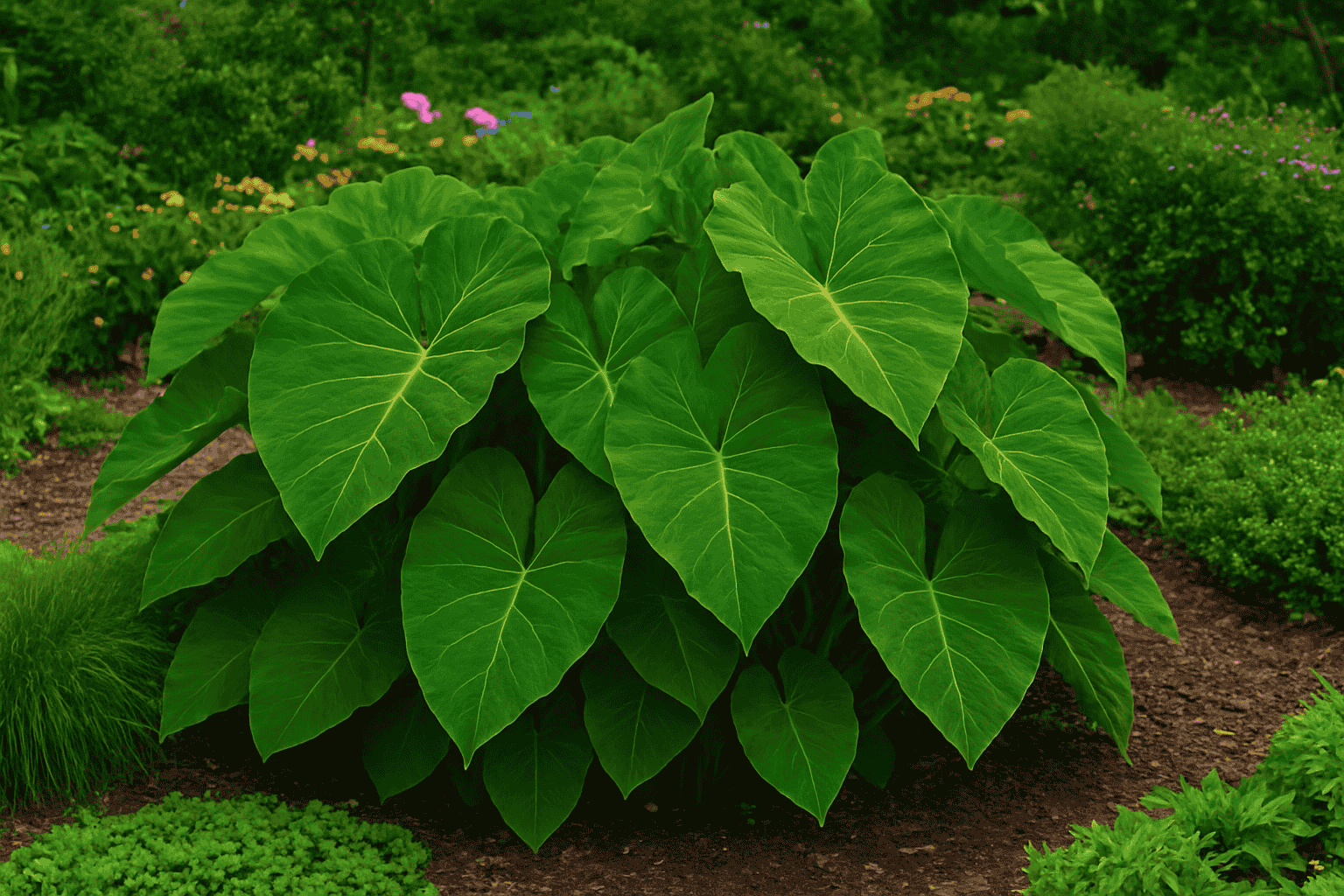
The elephant ear plant family has long been a favorite among indoor gardeners, and for good reason. With their bold, oversized leaves and tropical charm, these plants instantly bring life and drama to any space. I remember when I first added an elephant ear plant to my home—it immediately became the focal point of my living room. Its lush, green foliage created a sense of calm and made my space feel more vibrant and alive.
What makes this plant family so appealing is not just its aesthetic. Elephant ear plants are surprisingly versatile. They can thrive indoors in bright, indirect light or outdoors in shaded garden corners. Many varieties, including the alocasia stingray, grow quickly and respond well to consistent care, which makes watching them grow incredibly satisfying.
Whether you’re looking to create a tropical indoor jungle, add a statement plant to your entryway, or just enjoy the joy of nurturing something unique, the elephant ear plant family has something for every plant lover. Their combination of beauty, personality, and ease of care is why so many people—including myself—keep coming back for more.
Frequently Asked Questions
The alocasia stingray plant is a tropical houseplant known for its unique, stingray-shaped leaves and dramatic, glossy foliage.
Stingray alocasia care includes providing bright, indirect light, keeping the soil slightly moist, and maintaining high humidity for healthy growth.
Yes, it belongs to the elephant ear plant family, but its leaves have a distinct stingray-like shape that sets it apart from typical elephant ears.
Water when the top inch of soil feels dry, avoiding overwatering to prevent root rot. Regular monitoring is key.
Yes, it can be propagated by dividing the rhizomes carefully and repotting each section in a well-draining soil mix.
Table of Contents
- Alocasia Stingray Plant Guide: Tips for Healthy Growth
- What Makes the Alocasia Stingray Plant Unique?
- Stingray Alocasia Care: Light, Water, and Soil Needs
- How to Maintain the Right Humidity for Alocasia Stingray Plant?
- Propagation and Repotting Tips for Stingray Alocasia
- Is Alocasia Stingray Really an Elephant Ear Plant?
- Why the Elephant Ear Plant Family is Loved by Indoor Gardeners?
- Frequently Asked Questions
- Mona Lavender Plant: Complete Growing Guide for Beginners
- Alocasia Stingray Plant Guide: Tips for Healthy Growth
- Pink Lilly Flower: Growing and Caring for Pink Lillies

